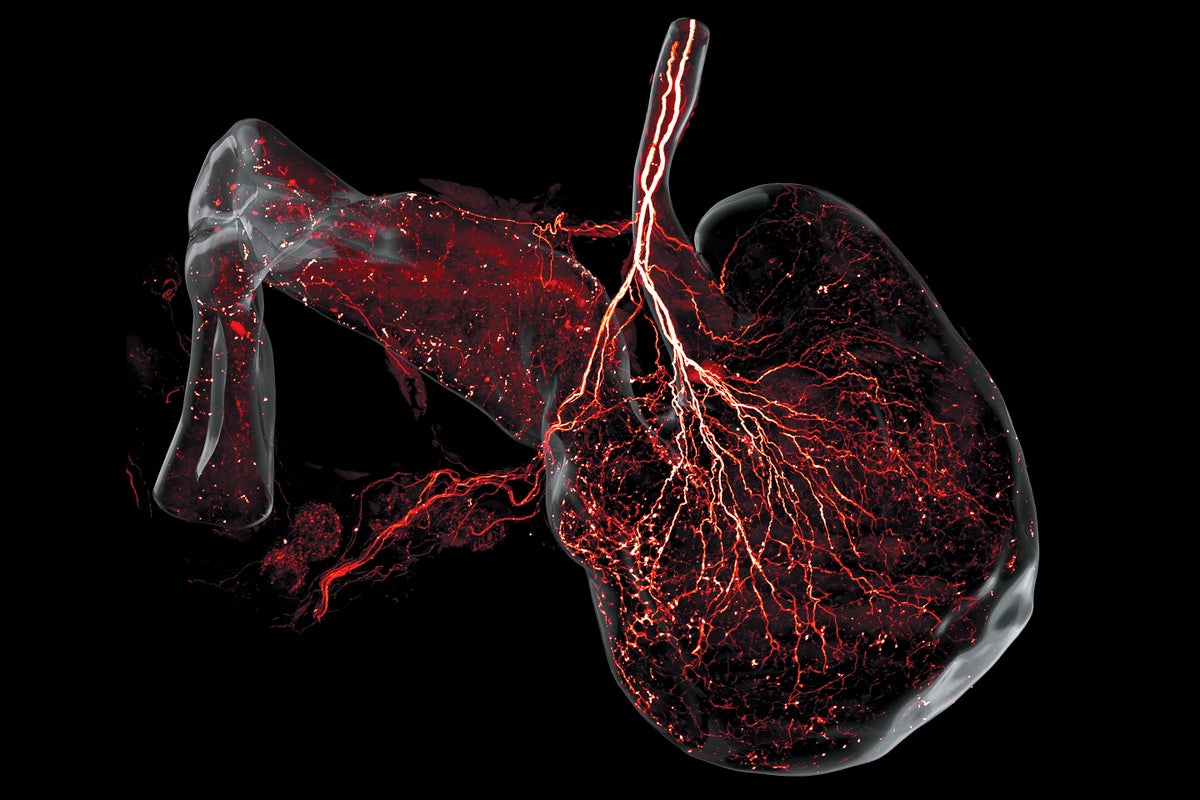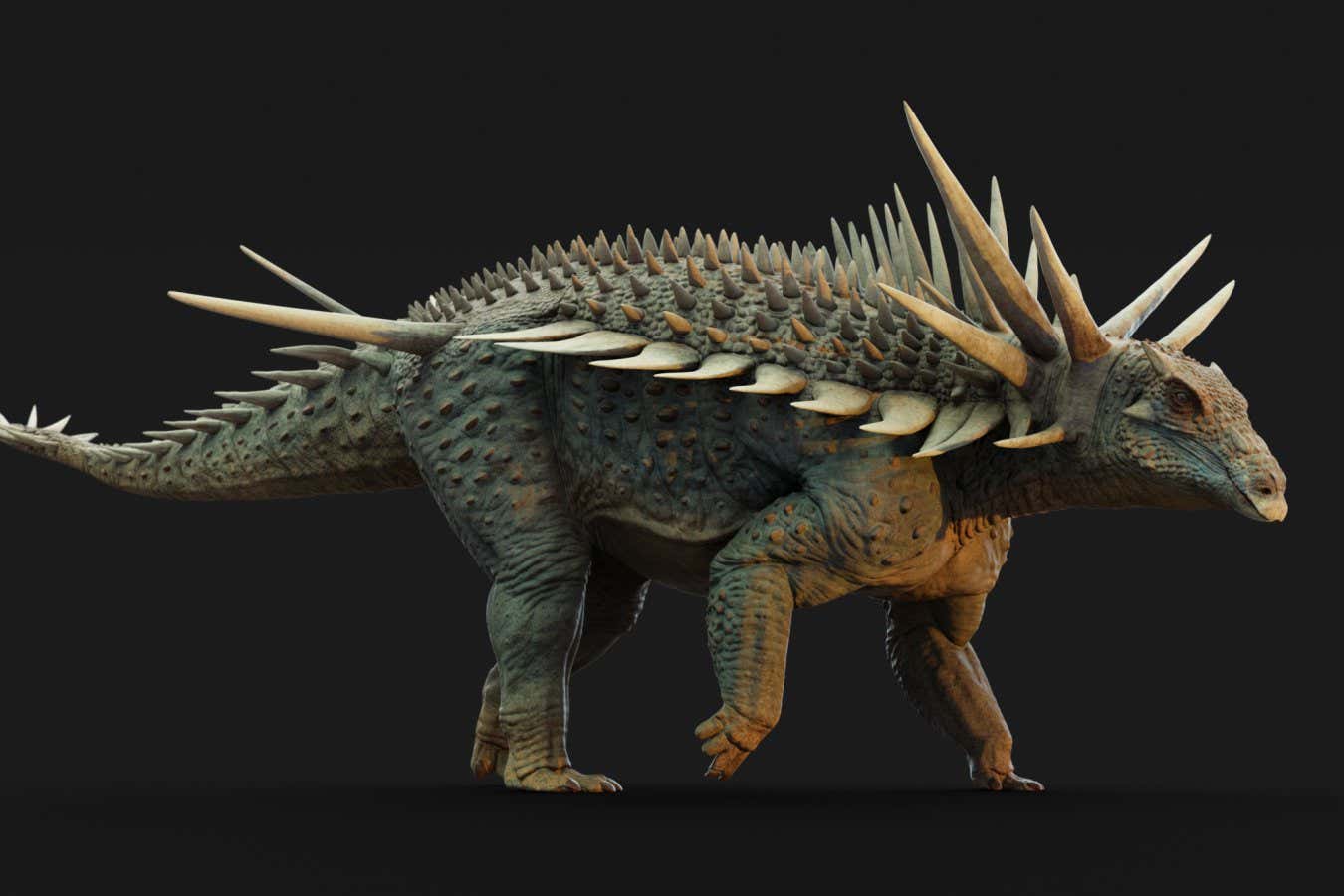August 27, 2025
2 min read
These Stunning Images Show Every Nerve in a Mouse
This new “connectome” could bring researchers one step closer to understanding how nerves connect to organs throughout the body
By Nora Bradford edited by Sarah Lewin Frasier
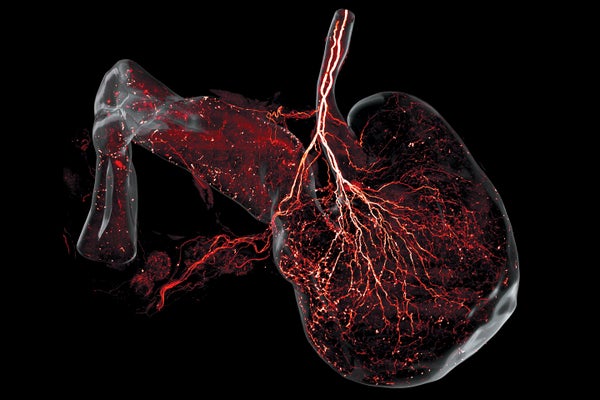
The mouse vagus nerve (white) branches into the stomach and small intestine.
“High-Speed Mapping of Whole-Mouse Peripheral Nerves at Subcellular Resolution,” by Mei-Yu Shi et al., in Cell, Vol. 188, No. 14; July 10, 2025 (CC BY 4.0)
Your peripheral nervous system (PNS) is crucial to navigating daily life. It lets you walk, controls your eye movements, and rings your brain’s alarms when you step on a Lego brick. Yet researchers have never built a complete map of this essential network in any mammalian body.
Now a study published in Cell shows a complete, three-dimensional map of every single nerve fiber threading through a mouse. It completes the first-ever mammalian “connectome,” a flowchart of an entire nervous system, beyond just the well-researched brain and spinal cord.
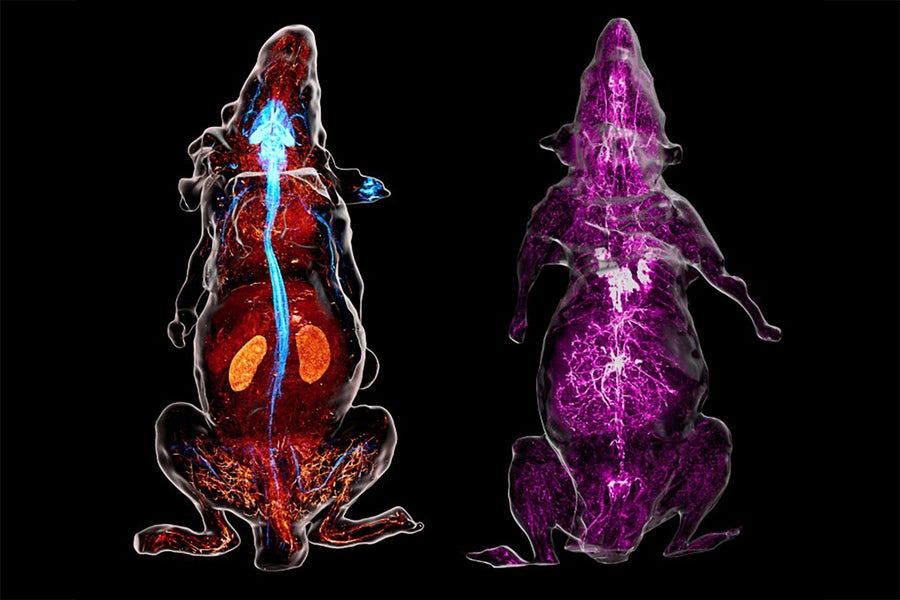
At left, nerves (blue) are visible in a reconstructed view of their paths through a mouse. At right, the sympathetic nerves appear in purple.
“High-Speed Mapping of Whole-Mouse Peripheral Nerves at Subcellular Resolution,” by Mei-Yu Shi et al., in Cell, Vol. 188, No. 14; July 10, 2025 (CC BY 4.0)
On supporting science journalism
If you’re enjoying this article, consider supporting our award-winning journalism by subscribing. By purchasing a subscription you are helping to ensure the future of impactful stories about the discoveries and ideas shaping our world today.
“Mapping of the PNS has been a neglected component of mapping the connectome in animal and human brain studies,” says John Darrell Van Horn, a brain and data science researcher at the University of Virginia, who was not involved in the study.
The research team began by making the bodies of 16 mice as visually transparent as possible, removing fat, calcium, and other materials that block light. They then used a custom combined slicing tool and microscope to take images of each of the bodies 400 microns at a time, which took about 40 hours per mouse—providing data the researchers say would otherwise have taken months or years to collect.
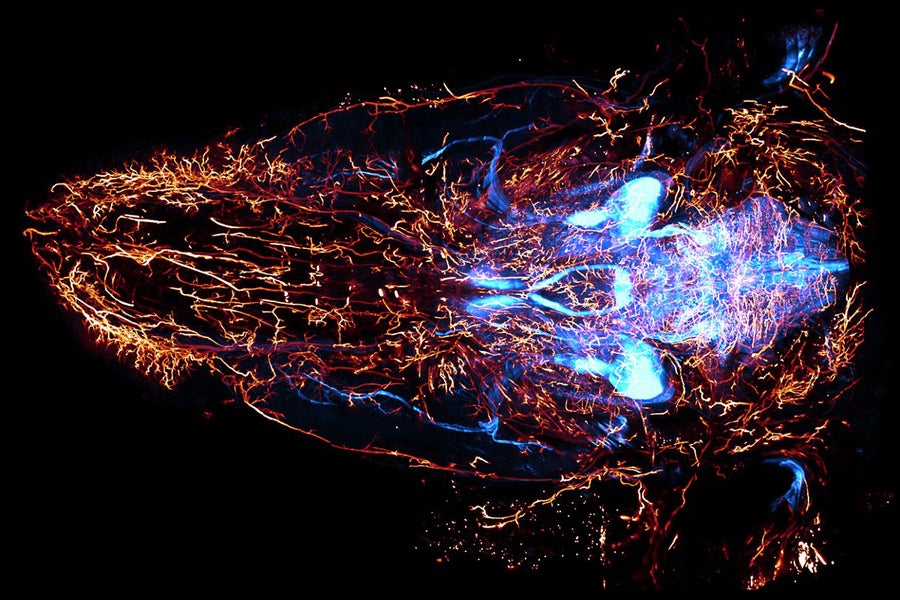
Nerves (blue) wind through a mouse’s head.
“High-Speed Mapping of Whole-Mouse Peripheral Nerves at Subcellular Resolution,” by Mei-Yu Shi et al., in Cell, Vol. 188, No. 14; July 10, 2025 (CC BY 4.0)
The scientists genetically modified seven of the mice to have fluorescent neurons; as expected, this caused mostly the head to light up. In four of the mice, the team applied a technique called immunostaining, which uses antibodies to target and color specific proteins—in this case, those in the body’s sympathetic nervous system, which controls “fight or flight” responses. In the remaining five mice, the researchers tested a method using viruses to measure the full length of nerve projections known as axons. They specifically focused on tracing the vagus nerve, which contains projections threading in from thousands of individual neurons. The team found that each vagus nerve fiber connected to only one organ in the gut, rather than branching to many different organs as some had predicted. (Its path through the stomach and part of the small intestine is visualized in the topmost image.)
“By revealing the precise projection patterns and organ-specific targeting of different peripheral nerves, these maps will provide a structural framework for understanding how the PNS mediates body physiology,” says co-author Guo-Qiang Bi, a biophysicist at the University of Science and Technology of China.
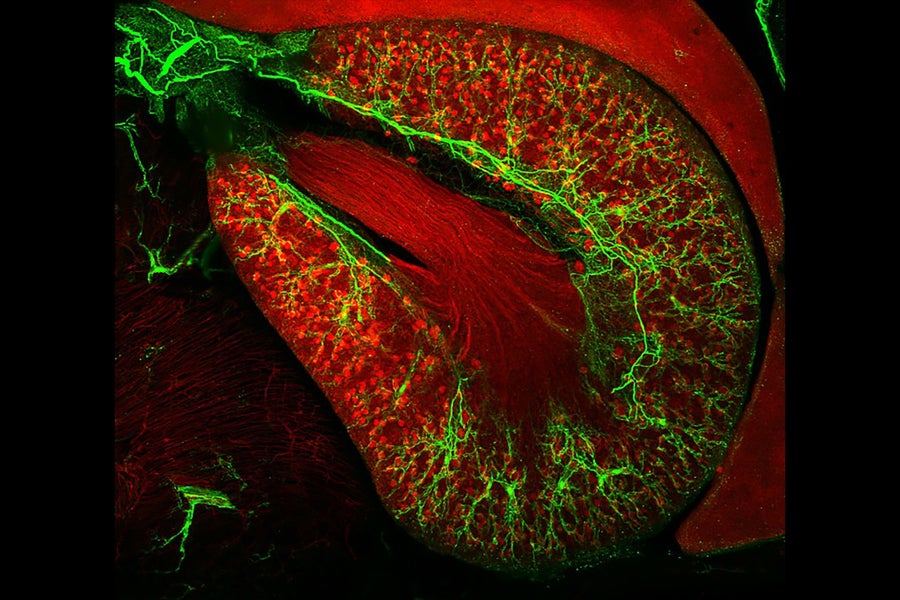
Sympathetic nerves (green) within a mouse’s kidney.
“High-Speed Mapping of Whole-Mouse Peripheral Nerves at Subcellular Resolution,” by Mei-Yu Shi et al., in Cell, Vol. 188, No. 14; July 10, 2025 (CC BY 4.0)
The researchers hope to apply this method to human tissue next to help plan precision surgeries. Van Horn says the work could also inspire therapies for nerve-related disorders such as chronic pain. “It moves us closer to the precision mapping of the entire mammalian connectome and the diseases that affect it, not just the part between the ears.”
It’s Time to Stand Up for Science
If you enjoyed this article, I’d like to ask for your support. Scientific American has served as an advocate for science and industry for 180 years, and right now may be the most critical moment in that two-century history.
I’ve been a Scientific American subscriber since I was 12 years old, and it helped shape the way I look at the world. SciAm always educates and delights me, and inspires a sense of awe for our vast, beautiful universe. I hope it does that for you, too.
If you subscribe to Scientific American, you help ensure that our coverage is centered on meaningful research and discovery; that we have the resources to report on the decisions that threaten labs across the U.S.; and that we support both budding and working scientists at a time when the value of science itself too often goes unrecognized.
In return, you get essential news, captivating podcasts, brilliant infographics, can’t-miss newsletters, must-watch videos, challenging games, and the science world’s best writing and reporting. You can even gift someone a subscription.
There has never been a more important time for us to stand up and show why science matters. I hope you’ll support us in that mission.





